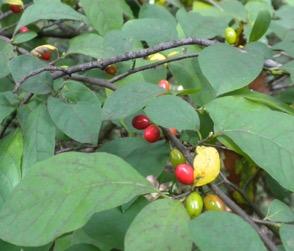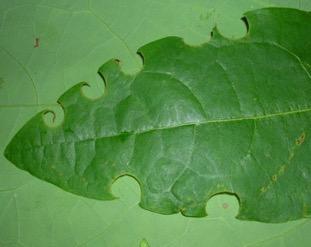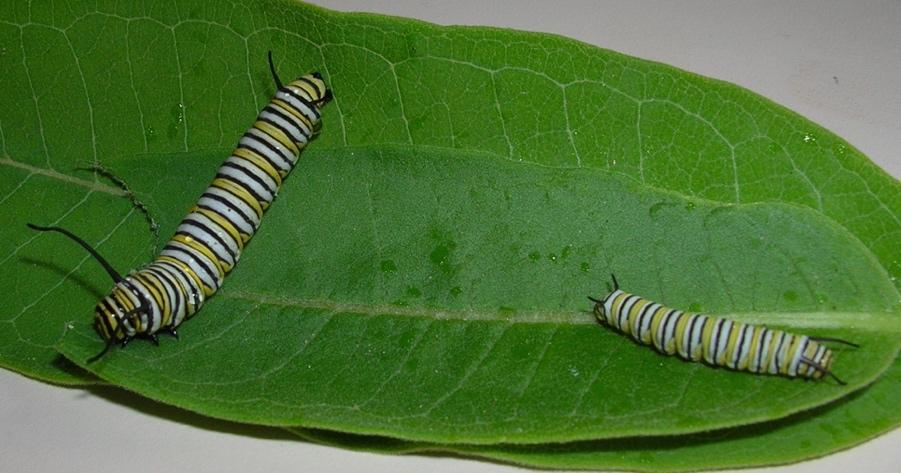by Ilse Gebhard, KAWO member

One summer I found a couple of Spicebush Swallowtail (Papilio troilus) caterpillars on a Spicebush (Lindera benzoin) by our garage and one on a Sassafras (Sassafras albidum) growing in the backyard. Spicebush is my very favorite shrub. Not only is it the caterpillar host plant for Spicebush Swallowtails, but also for the Promethea Moth (Callosamia promethea), one of the giant silkworm moths. And birds love the bright red berries in the fall since they are higher in fat content than many other berries. Migrating birds are especially in need of these berries to fuel their long flights.

After a long Michigan winter, nothing lifts my spirit more than the tiny yellow flowers of Spicebush, with their very aromatic smell. Every spring I realize how smell-depriving winter can be. What to me is a visual and olfactory delight, is a lifeline to the many pollinators that emerge in early spring and Spicebush provides them with the nectar and pollen they need.

As my Spicebush Swallowtail caterpillars grew, I kept raiding the conveniently located Spicebush for leaves to feed them. Finally, I decided to collect the more abundant Sassafras leaves from the backyard tree, the other host plant for this species. While choosing leaves to bring in – and here comes the “one thing leads to another” part – I found a leaf with circular holes along its edges. I tried to inspect as much of the tree, as the poison ivy on the ground allowed me to get near, but found no likely culprit for the holey leaves.
I threw the holey leaf in with the others, to take a photo and to find out who might have chewed those holes. But before I could do that, on the way back to the house, I just had to make a small detour and check a Common Milkweed (Asclepias syriaca) patch for Monarch (Danaus plexippus) eggs or larvae. It was my lucky day as I found both a 4th and a 5th instar (larval stage) caterpillar. I plucked the leaves they were on, to raise inside for my research project on Tachinid Fly Parasitism in Monarchs. Would they metamorphosize to the adult butterfly or had they been parasitized and would die at the larval or pupal stage?

Once inside, Spicebush caterpillars fed and Monarch caterpillars housed in quart canning jars, I consulted the books most likely to give me the answer to who made the holes in the leaf – Insects and Gardens by Eric Grissell and Tracks & Signs of Insects and Other Invertebrates by Charley Eiseman and Noah Charney. This was before smart phone applications like SEEK were widely available and one purchased hard copy field guides. Both books provided me the answer, some species of leaf cutter bee. These solitary, non-aggressive bees make their nests in cavities such as hollow stems and line them with bits of foliage. They lay their eggs and provide their -to-be offspring with pollen or pollen mixed with nectar. They are excellent pollinators.
For information on providing nest sites for many of our native bees and wasps see this fact sheet from the Xerces Society.
